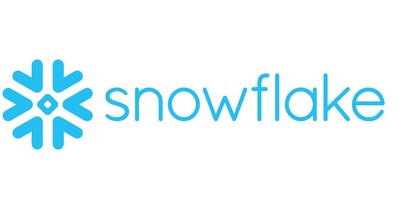Customer experience is a topmost priority!
There is no denying to it! Well, we can bet on it!
Though, in the digital landscape, improvement at all levels is vital as a customers great experience is equivalent to your success. Any bad experience is equivalent to your downfall.
But no worries, there is Snowflake, a market-leading data platform that offers businesses strong tools to build effective, tailored customer experiences that compel repeat business.
Snowflake provides innovative solutions to assist companies all over the world in bettering their customer experiences
From reducing data management procedures to incorporating powerful analytics into corporate operations, Snowflake has been at the forefront of this movement.
Want to know, how?
Let’s take a deeper look at what this Snowflake framework is.
Snowflake framework
Snowflake is a single platform which was created in 2012, for data warehousing, data science process, data lakes, engineering data, and application development. It is a fully managed SaaS (Software as a Service) offering platform. The Snowflake framework is a mix of traditional database architectures that include shared-disk architecture and shared-nothing architecture.
With similarity to a shared disk structure, Snowflake utilises a unitary data repository for persistent data accessible by all the nodes within the platform.
However, similar to the shared-nothing structure, Snowflake utilises MPP clusters to process queries. Every node within a group locally stores a small portion within the entire data set. This technique incorporates the access of shared-disk structure data management with the efficiency and scale-out benefits of shared-nothing structure.
Today Snowflake is continuously improving the customer experience but how do they do it? Let’s explore in detail.
How Snowflake has incorporated feedback from customers and learned from it?
Snowflake Support has installed continuing signals to make sure they are actively hearing customer feedback and then acting upon it. When you need them, they want your partnership with Snowflake Support to simply work, so theyre prioritising changes behind the scenes.
Let’s explore the main signs snowflake have paid attention to and learnt from the signs are listed below:
Closed-Loop Process and Customer Satisfaction Surveys:
After a Support case is resolved, the customer is given the chance to review their overall experience and provide input on what worked well and what may be improved in a quick survey. Utilizing a closed-loop methodology that scales and gauges the impact on the client, we take this input and use it to motivate the execution of improvements.
In order to better understand some clients experiences and develop a data-driven strategy to enhance support, it regularly follows up with them.
Reviews of Support Cases:
After a Support case is closed, they have to choose a specific case for review; over the previous year, theyve evaluated roughly 12.5% of cases. Reviews of specific cases look at the case management, customer support, and troubleshooting abilities of Cloud Support Engineers (CSEs).
Based on the case assessment, technical support managers instruct CSEs individually and pinpoint areas that could warrant more extensive training or process improvement.
Annual Customer Interaction Relational Survey:
Snowflake conducts an annual Customer Interaction Relational Survey to see whether their efforts are satisfying the demands of our customers. This year, they have conducted a global survey of more than 3,000 Snowflake users in more than 50 countries.
Snowflake has achieved a remarkable NPS score of 68. The findings indicate that a significant portion of consumers were happy with every aspect of their end-to-end customer experience, including their interactions with Snowflake when they needed assistance or support.
Actions taken by Snowflake to improve their Customer Experience
Now we know how Snowflake has incorporated feedback from customers and learned from it.
Let’s explore the areas in which the Snowflake have improved as a result of customer feedback:
Excellence in Customer Service: They have been working to raise the standard of their communications and interactions with customers. This entails outlining for clients what they can anticipate from their goods and services, developing abilities in this area, and showing sympathy for clients who are experiencing difficulties.
Based on case assessments, this endeavour has improved customer service competency ratings by 13.6% in the last year.
Quick Issue Clarification: Prior to doing diagnostics and focusing on a solution, snowflake have been attempting to establish the precise nature of each customers issue as early as feasible in the case. Issue clarification review ratings have increased 10.7% year over year as a result of this troubleshooting best practices.
Why is the Snowflake experience better?
Using the best practices, this raises valid concerns about building policies from scratch, but its important to adapt to new technologies and new business opportunities, and that includes actually needing rebuilding.
If you put a 1982 Chevrolet engine in a 2019 Mustang, can you expect the same performance?
Well, such decisions help you adopt new technologies, gain agility, and enhance your business applications and processes.
Key areas to check include policies, user management, sandbox settings, data loading methods, ETL frameworks, tools, and codebase. With Snowflake, you can get the best possible features to improve your business performance.
What are these features? Lets take a look.
1. Apt data modeling
Snowflake serves multiple purposes: data lake, data mart, data warehouse, ODS, database. It also supports various modeling methodologies such as Star, Snowflake, Data Vault and BEAM. Snowflake can also support read-on-schema and write-on-schema. This can cause confusion with correct Snowflake placement. The solution is to predict the data model from usage patterns.
Consider how you envision data consumers and business applications leveraging Snowflake data assets. This helps clarify your organization and resources to get the best experience with Snowflake.
2. Plan More accurately
Companies use customer data to forecast demand. These insights will help you determine which products to prioritize and which regions are likely to need which SKUs at some point in the future. Analyzing customer data also helps predict future customer needs and inform product development.
3. Increased Profitability
Much of supply chain management focuses on lean operations. The more you can cut costs, the more profit your company will make. Supply chain analytics enable companies to monitor operations and identify opportunities to improve efficiency.
4. Improved Connector Troubleshooting
When setting up a connection to the Snowflake platform, you may encounter various network, security, or proxy configurations that can affect your initial connection. Their debugging tools help both you and Snowflake Support highlight areas that require corrective action and remove hidden roadblocks.
Conclusion
When connecting to the Snowflake platform, you may encounter various network, security, or proxy configurations that can affect your initial connection.
Our debugging tools help both you and his Snowflake support highlight areas that require corrective action and remove invisible roadblocks.
by Harshit Saxena
























